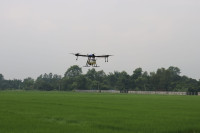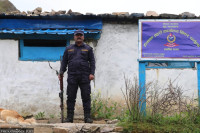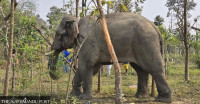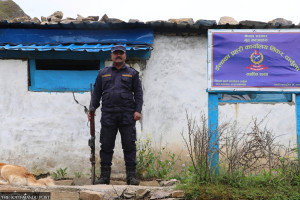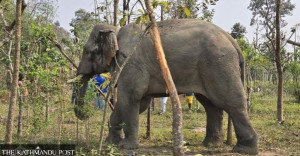Sudurpaschim Province
Blackbuck boom brings management challenge in Shuklaphanta
Over 300 blackbucks live in a 60 sq km enclosure where they are fed by park staff. But officials say confinement may not be a long-term solution.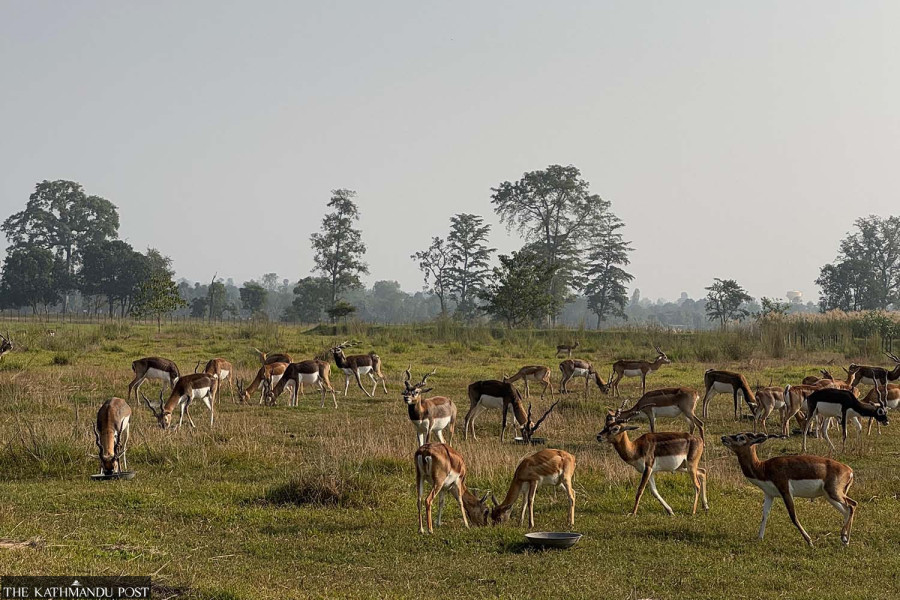
Bhawani Bhatta
The rising blackbuck population in the Shuklaphanta National Park has become both a conservation milestone and a management challenge..
The number of blackbucks, known as Krishnasar in Nepali, in the Hirapur grassland enclosure of the national park has surpassed 300. Besides being a conservation success, it is also testing the park’s ability to sustainably manage the herd.
Originally translocated from Khairapur-based blackbuck conservation area in Bardiya and the Nepalgunj Zoo in Banke in 2012 and 2015, the population started with just 42 individuals and now stands at 306. According to the national park authority, there are currently 144 females, 117 males and 45 fawns.
Currently confined within a 60-square-kilometer wire-fenced enclosure, the blackbucks receive food and care from park staff. However, conservation officials are now questioning the long-term sustainability of keeping the species in captivity. “How long can we keep them within the enclosure?” said Purushottam Wagle, the conservation officer at Shuklaphanta National Park. “We are exploring options to gradually release them into natural grasslands within the park or even consider relocating them elsewhere.”
In the early years after relocation, the population growth was slow due to internal fighting among males, especially during the mating season, and diseases such as parasites. However, in recent years, the numbers have been steadily increasing, bringing both encouragement and concern for conservationists.
Officials are currently discussing multiple management strategies, including expanding the current enclosure, creating controlled exit points for partial release into natural habitats, or relocating some to other regions like Chitwan, where infrastructure for enclosures already exists.
The Department of National Parks and Wildlife Conservation is involved in ongoing discussions and studies regarding these options. “We are considering various strategies but haven’t reached a final decision,” said Deputy Director General Bed Kumar Dhakal. “Limited financial resources have slowed down the process of study and potential relocation,” he added.
The issue of managing the growing blackbuck population is also part of the park’s latest five-year strategic plan, which emphasises habitat-based solutions. One potential site for release is Barnikheda, a grassland area within Shuklaphanta. Conservationists are also considering loosening parts of the current fence to allow limited movement in and out of the enclosure to mimic a more natural environment.
While the rising population reflects successful conservation efforts, the need for sustainable and long-term planning is now pressing. Experts emphasise that keeping wildlife in enclosed spaces indefinitely is neither practical nor beneficial for the species in the long run.
Shuklaphanta National Park, located in Nepal’s far-western Tarai, remains one of the few habitats in the country where blackbuck populations are being actively managed and conserved. As conservationists look toward the future, the park stands at a critical juncture—balancing growth with ecological sustainability.
Blackbuck (Antilope cervicapra) is an antelope native to India and Nepal. The animal species is listed as a near-threatened species by the International Union for Conservation of Nature. Efforts for blackbuck conservation began in Nepal in 1975 when a small herd was spotted in Khairapur in Bardiya district. On March 16, 2009, the government officially declared the area as Blackbuck Conservation Area, which spreads over 16.95 square kilometres of land in ward 2 of Gulariya Municipality.




 16.12°C Kathmandu
16.12°C Kathmandu
